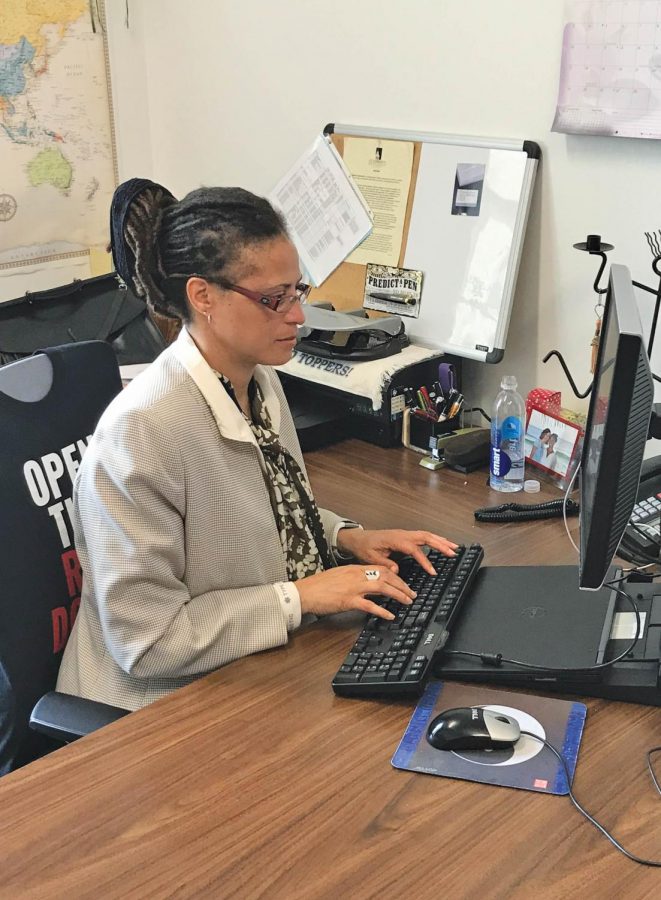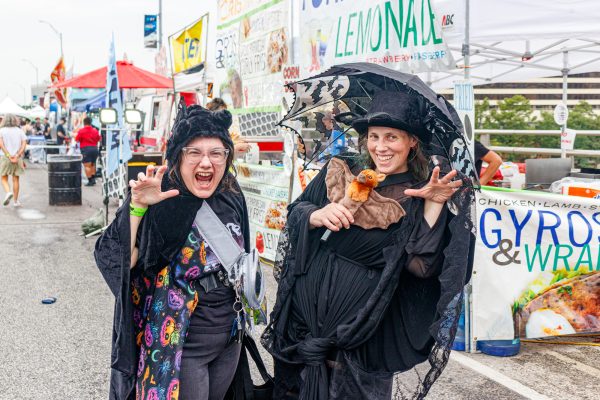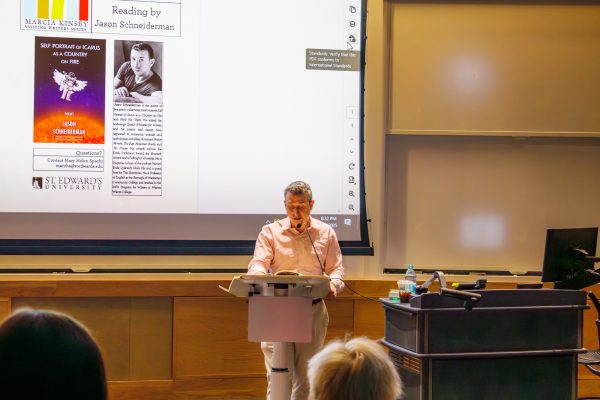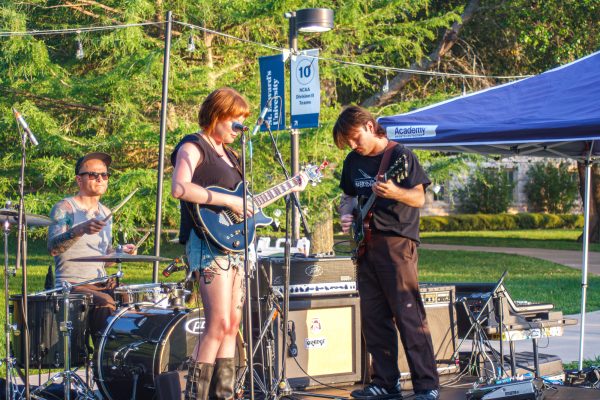Professor fosters inclusive environment for SEU students, teaches communication values
Varner has conducted ethnographic qualitative research on women of color in American higher education as well as hair and body politics.
Dr. Teri Lynn Varner momentarily paused as she spoke of her upbringing in Detroit, and what she faced as a young black woman growing up in what she referred to as “white America” in the early 1970s. She sat at her desk at the center of her office, rich in both her familial roots and African-inspired art in its many vibrant forms.
Varner is a proud African-American and professor of communication at St. Edward’s who uses her past to stimulate the success of students of all ethnic backgrounds. She is a voice for the African-American community.
Chuckling slightly, Varner told the story of her “first visceral altercation with racism”: an unprovoked verbal attack in a local chicken restaurant. She recalled the event with vivid clarity and highlighting how her parents often made sacrifices for her and her brother. But this particular encounter resonated with her, and still does today. Varner described how a physical altercation nearly broke out.
“This stuck with me — it was the first time I had seen that…that hatred, for no reason,” she said. Adopted at birth, she was given no choice but to quickly attempt to understand her racial identity as a child.
After a diverse career ranging from performing, to directing and adapting theatrical projects, to conducting academic research on various subjects, Varner finds herself at St. Edward’s, preaching the importance of communication skills. She is enthusiastic in emphasizing the significance of successful communication, especially given the current climate.
Varner believes that the importance of being able to properly articulate what you want to say is a fundamental skill. In fact, it may seem obvious, but effective communication can provide a platform to share experiences and meet new people, which is applicable to a wide range of general studies.
For Varner, teaching the value of communication is an effective way to enhance the lives of students at St. Edward’s. This is at the forefront of her mind as she considers whether there is an issue with a lack of diversity at this school.
“It is about wider exposure,” she said. “There is an interesting physical divide related to where the school is situated here in Austin: I-35. On the east side, there is a largely black and latino community, whereas on the west it is a largely white community.”
Regardless, when on campus, students are encouraged to be seen as equals.
Varner highlighted that many students will often say, “I don’t see color,” but for African-Americans and most people of color, this is all that they see when it comes to racial identity politics. It is undeniably present. On campus, there is a faculty-led diversity committee. “But a lot of what happens here depends on the students,” Varner explained.
Above all else, it is about believing in the mission statement and the university’s core values. This is Varner’s 11th year as a professor here, and she looks back with nothing but positive memories. Students feel the same way about her. She recalled one student that shared with her: “I was so glad when you walked into the room. I no longer felt isolated.” As an African-American professor, she provides a go-to for those of ethnic minorities who feel this way, and she is happy to take on this role.
“Even white students recognize that by interacting with me, I am just one microcosm of the larger African diaspora,” Varner said, visibly gleaming with pride. This further establishes a connection with her students. For those in the St. Edward’s community, Varner can be an example of positive communication and embracing diversity.

Hi! I am George Murray, one of the Sports Editors at Hilltop Views. I am an english literature major and journalism & digital media minor graduating...








William • Jul 16, 2025 at 6:59 pm
I believe it is inaccurate that “…for African-Americans and most people of color, this is all that they see when it comes to racial identity politics. It is undeniably present” is exclusive to American minorities. The country’s majority has always had the means to control and execute their narrative of “racial identity politics” to the broad American citizenry and more recently has openly expressed their racial and gender identity politics.